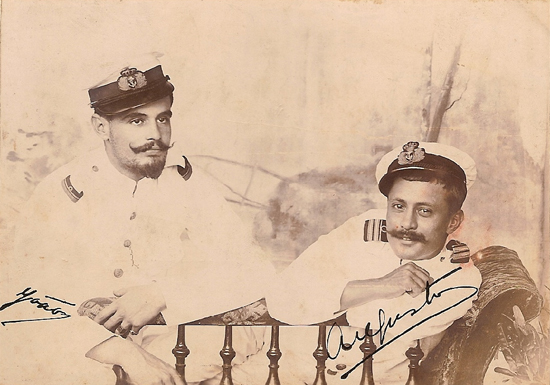
Officers of the Portuguese Gunship “Diu” photographed in Goa (Portuguese India) circa 1900. Both wear peaked caps with white covers.
By the end of the 19th Century, officers of the Portuguese “Armada Real” (Royal Navy) were in great need of some sort of tropical headdress. Unlike other ranks, which were supplied with large brim straw hats for tropical climates, officers had nothing to wear but their peaked caps, made hotter and heavier by the regulation white covers.
This situation changed in 1894, when officers were issued a sun helmet (fig. 2), intended for “warm climates, especially during the day”. This helmet was made of cork “or any other light material”, covered with white “alpaca” (a type of cloth made of the fur of the south American mamal alpaca, or Vicugna Paco). The peaks were lined with either green silk or green “alpaca” and the the skull was lined with a “light tissue”. A cover of white linen was to be worn at all times and the helmet was fitted with a white leather chinstrap held in place by two small British style “anchor” buttons (figs. 3, 4 and 5). The dress regulations determined the dimensions of the helmet (table 1).
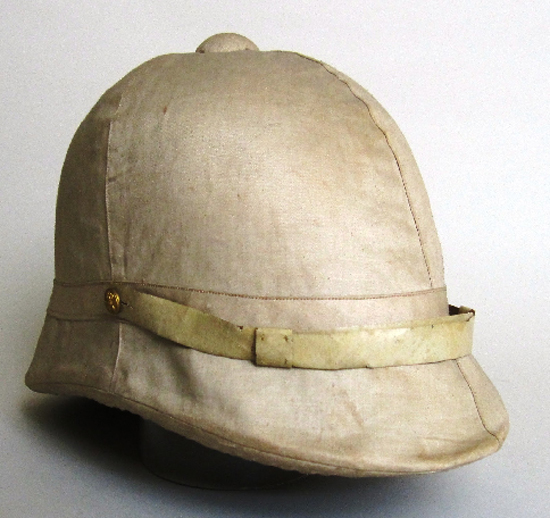
Fig. 3 – 1894 pattern Portuguese Royal Navy sun helmet. Notice the white cover and the leather chinstrap.
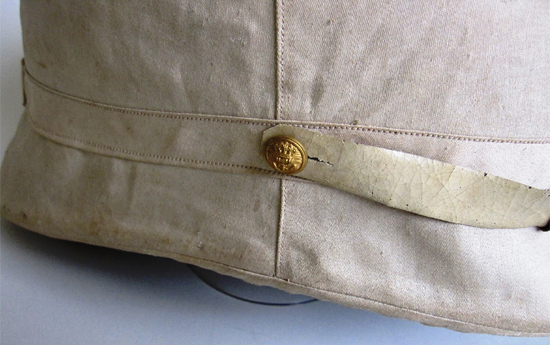
Fig. 5 – 1894 Portuguese Royal Navy sun helmet (detail). Although similar to the British, Portuguese “anchor” buttons had the Portuguese five arches Royal crown.

Table 1: specifications of the 1894 Portuguese Royal Navy sun helmet. These were maintained in 1903.
The 1894 pattern was modified in 1903. The leather chinstrap was replaced by a white cotton cord (which was, in fact, sometimes used since 1894…) and the use of the white cover was made optional. This later change had great impact: as the use of the cover was mandatory in 1894, many of these helmets were not covered in the regulation white “alpaca”. In 1903, as the use of the white cover became optional, the helmets simply had to comply with the regulations, as the removal of the cover would give away any non-regulation colour (figs. 6, 7, 8 and 9).
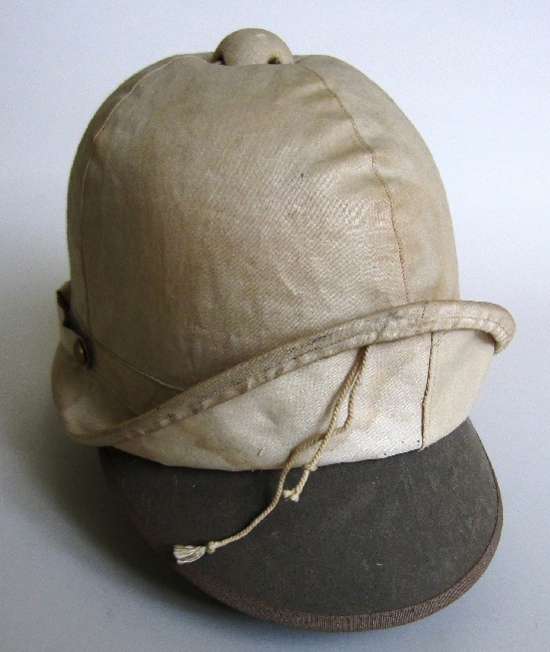
Fig. 6 – 1894 pattern Portuguese Royal Navy sun helmet (detail). The white cover has been partially lifted to show the non-regulation skull in gray felt.
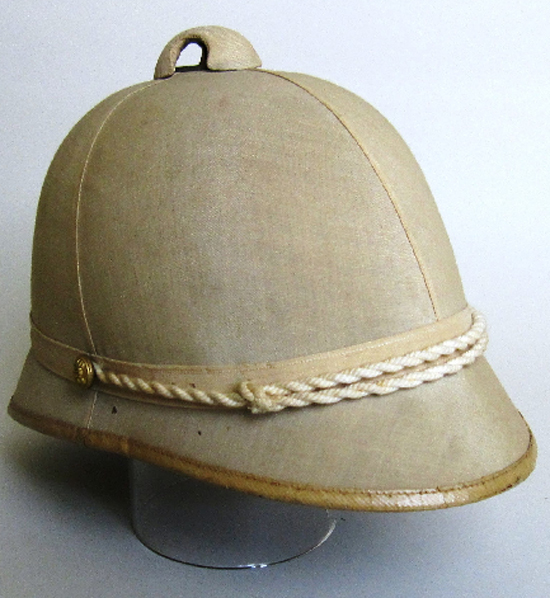
Fig. 7 – 1903 pattern Portuguese Royal Navy sun helmet. Notice the white cotton cord chinstrap and the absence of the optional white cover.
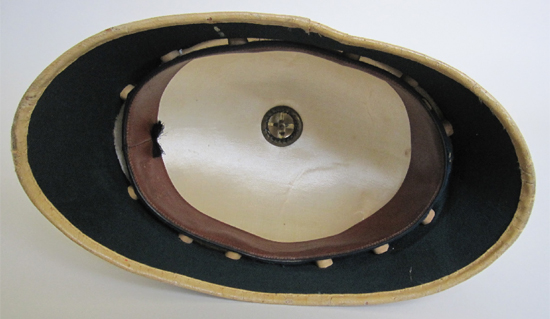
Fig. 8 – 1903 pattern Portuguese Royal Navy sun helmet (inner view). To ensure ventilation, a space between the skull and the sweatband was created. Several types of solutions, such as the use of cork “spacers”, were adopted for this purpose.
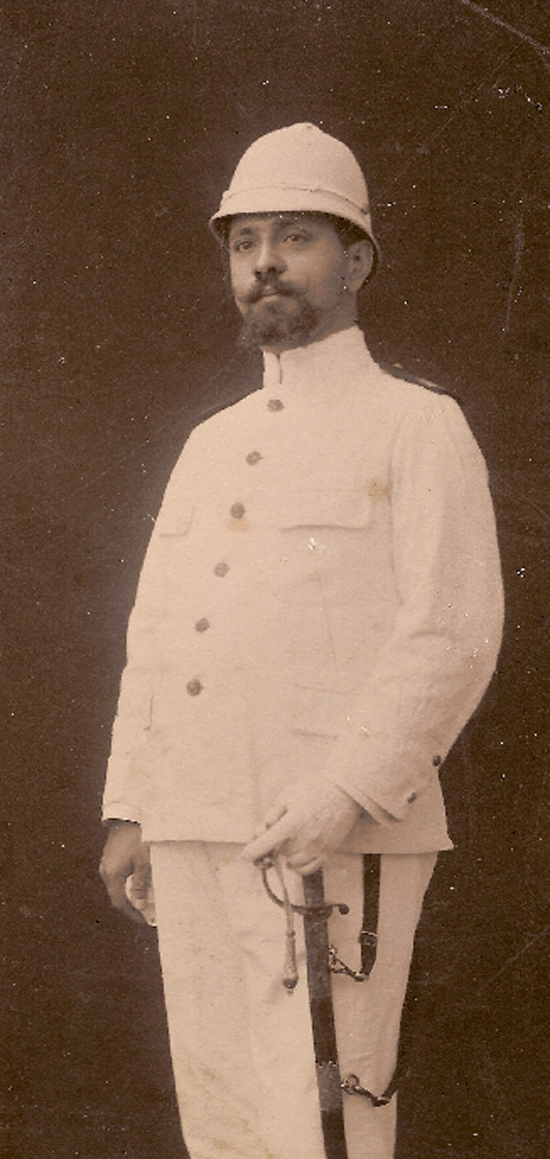
Fig. 9 – A Portuguese Royal Navy officer photographed in the Açores (Azores). Notice the 1903 pattern sun helmet.
The 1903 helmet was used until the fall of the Portuguese Monarchy, in 1910. It was still worn, with new “anchor” buttons stripped of their Royal crown, in the first years of the republic. It was officially replaced by a Wolseley style helmet in 1913 (see The Wolseley Helmet in Pictures, by Stuart Bates with Peter Suciu), but some were still worn during the Great War (fig. 10).
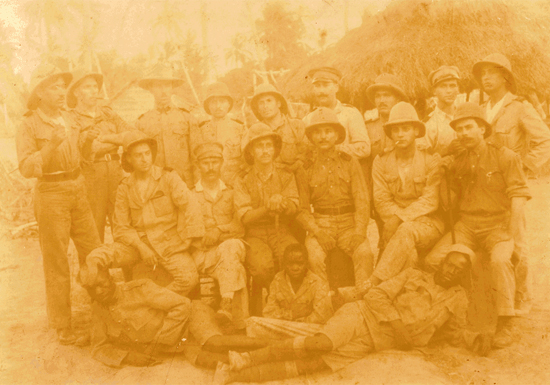
Fig. 10 – Portuguese Navy and Army officers in Africa during the Great War. The naval officer sitting on the right, First Lieutenant Fronteira, removed the white cover of his old 1894 pattern sun helmet, thus turning it less conspicuous for campaign purposes. This helmet is the same pictured in figs. 4 to 6.

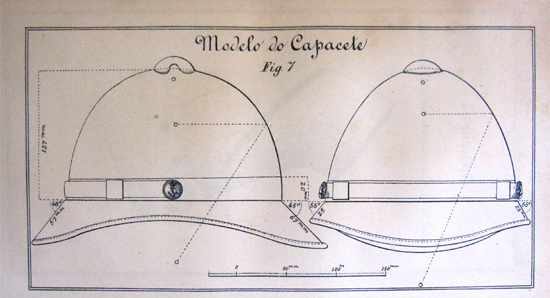
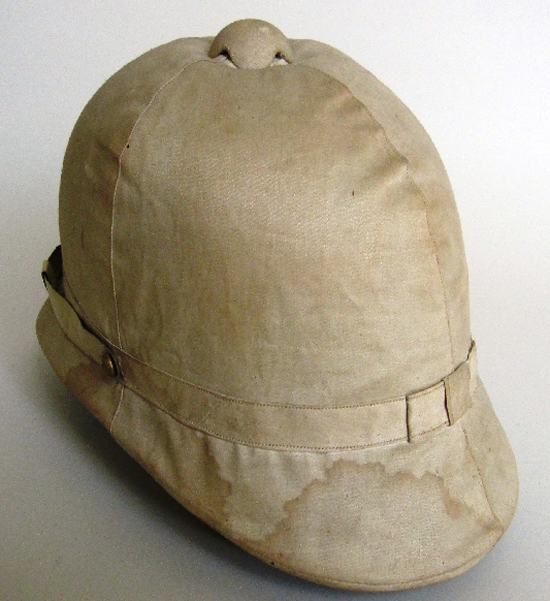
Thankyou for the article and interesting photographs.
Thank you for reading! It is a pleasure to help telling the story of the sun helmet.
Best wishes
Pedro
Caro Pedro muitos parabéns por participar neste site fantástico e dar a conhecer a nossa História a quem de outro modo a ignoraria completamente. Já conheça o seu trabalho na divulgação da nossa história militar,pois tenho um dos seus livros,o “Portugal Militar” aproveito o envio desta mensagem,embora nãos seja o local mais apropriado para lhe fazer uma pergunta: Existe alguma publicação com fotos sobre o nosso exercito ultramarino?.Não me refiro ao periodo da guerra de 1961/74,mas sim do perido que vai de finais do sec XIX até aos anos 50.Infelismente existe pouquissima coisa publicada acerca desse assunto.Como era fantástico ver fotos das companhias indigenas das nossas colonias…Não me alongo mais para não o massar,um bem haja e continuação do bom trabalho que faz